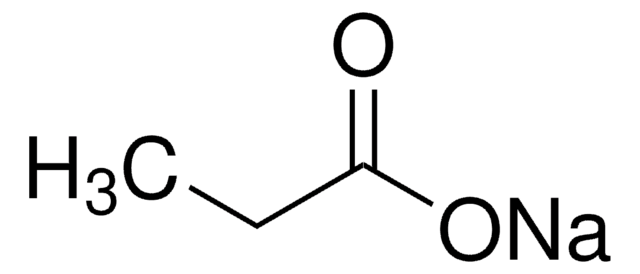W265608
Maltol
≥99.0%, FCC, FG
Synonym(s):
3-Hydroxy-2-methyl-4-pyrone, 3-Hydroxy-2-methyl-4H-pyran-4-one, Larixinic acid, Maltol
About This Item
Fragrance grade
Halal
Kosher
Recommended Products
biological source
synthetic
Quality Level
grade
FG
Fragrance grade
Halal
Kosher
agency
follows IFRA guidelines
reg. compliance
EU Regulation 1223/2009
EU Regulation 1334/2008 & 178/2002
FCC
FDA 21 CFR 117
FDA 21 CFR 172.515
assay
≥99.0%
autoignition temp.
1364 °F
expl. lim.
25 %
mp
160-164 °C (lit.)
application(s)
flavors and fragrances
documentation
see Safety & Documentation for available documents
food allergen
no known allergens
fragrance allergen
no known allergens
organoleptic
caramel; jam; fruity; sweet
SMILES string
CC1=C(O)C(=O)C=CO1
InChI
1S/C6H6O3/c1-4-6(8)5(7)2-3-9-4/h2-3,8H,1H3
InChI key
XPCTZQVDEJYUGT-UHFFFAOYSA-N
Looking for similar products? Visit Product Comparison Guide
Related Categories
Application
- Maltol prevents the progression of osteoarthritis by targeting PI3K/Akt/NF-κB pathway: In vitro and in vivo studies.: This article details the mechanisms through which maltol mitigates osteoarthritis, focusing on its effects on key signaling pathways which could be beneficial for therapeutic applications (Lu et al., 2021).
- The Liver Protection Effects of Maltol, a Flavoring Agent, on Carbon Tetrachloride-Induced Acute Liver Injury in Mice via Inhibiting Apoptosis and Inflammatory Response.: This study explores maltol′s hepatoprotective properties, demonstrating its potential to inhibit apoptosis and inflammation in models of acute liver injury (Liu et al., 2018).
signalword
Warning
hcodes
Hazard Classifications
Acute Tox. 4 Oral
Storage Class
11 - Combustible Solids
wgk_germany
WGK 2
flash_point_f
Not applicable
flash_point_c
Not applicable
ppe
dust mask type N95 (US), Eyeshields, Gloves
Choose from one of the most recent versions:
Already Own This Product?
Find documentation for the products that you have recently purchased in the Document Library.
Customers Also Viewed
Our team of scientists has experience in all areas of research including Life Science, Material Science, Chemical Synthesis, Chromatography, Analytical and many others.
Contact Technical Service












